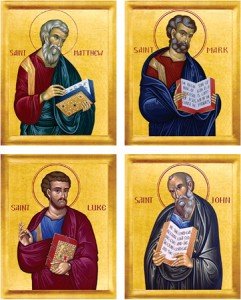 As I suggested in the last issue of this article, it seems that the way the Scriptures were written, allows them to have multiple layers of meaning and the Church has, for centuries, wrestled with their meaning. Although the Middle Ages, especially the great scholastic period, contributed to the better understand of Scripture, the contribution to real New Testament (NT) criticism were not major.
As I suggested in the last issue of this article, it seems that the way the Scriptures were written, allows them to have multiple layers of meaning and the Church has, for centuries, wrestled with their meaning. Although the Middle Ages, especially the great scholastic period, contributed to the better understand of Scripture, the contribution to real New Testament (NT) criticism were not major.
In the 16th century, at the time of the Reformation, there was an increased interest in the Bible, especially in the Reformed Churches. The interest, however, was more dogmatic than it was critical. Remember that Luther came up with the idea that the sole rule of our faith was the Bible. We, of course, hold that a person seeking to have a true understanding of Scripture must also have knowledge of Tradition and Liturgical Practice. These two sources provide great insight into the Church’s understanding of Scripture.
One important figure in this period was A. Osiander, an early Lutheran reformer, who published in 1537, a harmony of the Gospels that set the style of Protestant harmonies of the following centuries. His approach was much more rigid than Augustine’s, and for him, minor differences in sequence or detail meant different events.
Against the background of two movements in the 18th Century, that is rationalism and the Enlightenment, the scientific method was formulated. When this method was applied to the study of history, and particularly to biblical history, the science of Biblical historical criticism was born.
A French Oratorian priest, Simon, was the first to apply the critical method to the NT, which subsequent authors build upon, to produce the first truly historical and critical introduction to the NT. Understanding the NT in this manner, in my estimation, truly doesn’t necessarily bring a person closer to Christ or God.
One of the subsequent scholars, H.S. Reimarus, distinguished between the historical Jesus (a Jewish revolutionary who failed in an attempt to establish an earthly Messianic kingdom) and the Christ found in the Gospels and preached by the Church (a deception created by the disciples who stole the body of Jesus from the tomb and invented the doctrines of the resurrection and parousia). He was prejudiced by rationalism’s rejection of the supernatural and was the first scholar to try to pierce through the Christological dogma of the Gospels to the real historical Jesus, a concern still extant in today’s world.
